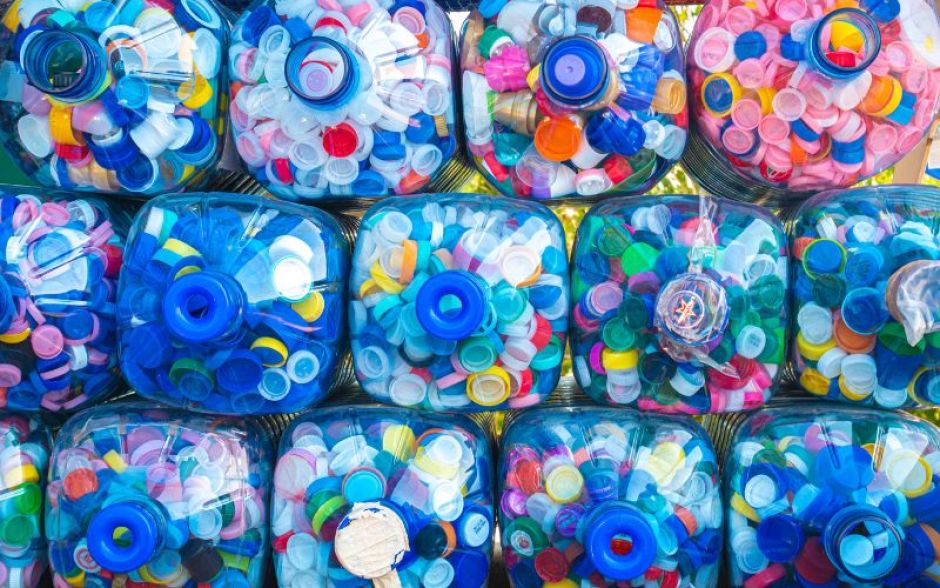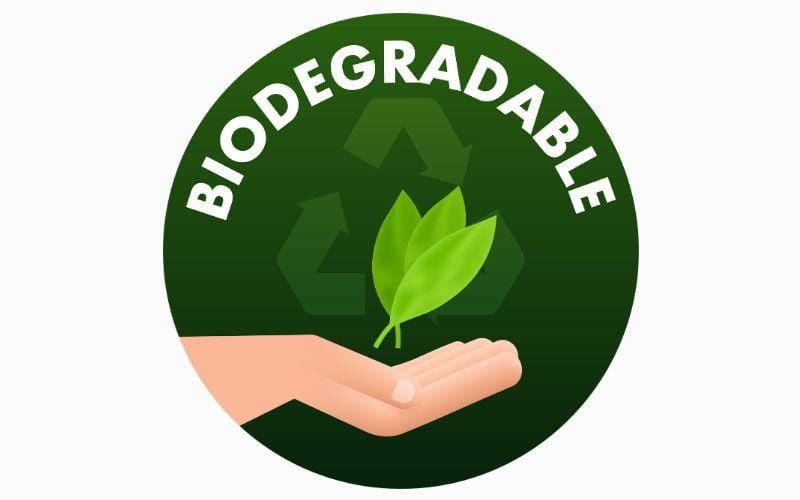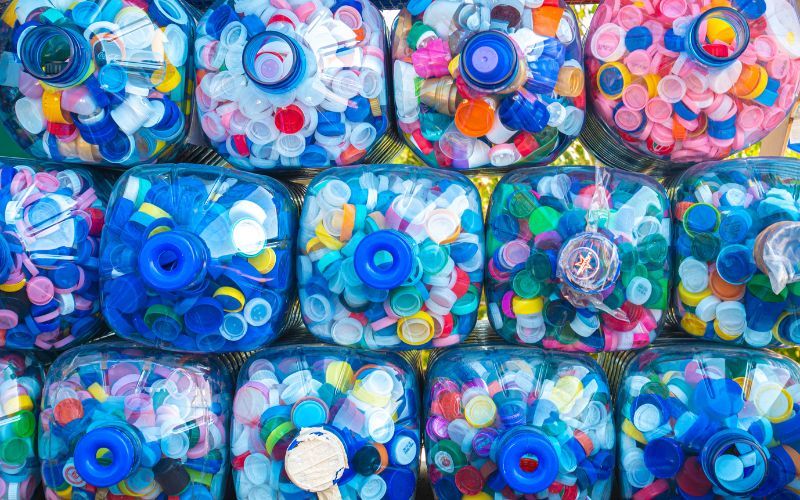
Reusable Containers : The Sustainable Solution for Eco-Friendly Living 2023
In a world marked by growing environmental awareness, Reusable Containers have emerged as a beacon of sustainability, offering a practical solution to combat single-use plastic waste and promote eco-friendly living. As an essential sub-category of Eco-Friendly Gear, Reusable Containers exemplify the principles of reduce, reuse, and recycle. These versatile containers go beyond being mere vessels for our daily necessities; they represent a commitment to a greener, more sustainable future.
This comprehensive guide delves into the realm of Reusable Containers, exploring their significance in reducing plastic waste, understanding their environmental impact, and showcasing the diverse range of options available. Whether you’re a conscious consumer, a meal prep enthusiast, or an eco-conscious traveler, this guide is your roadmap to embracing Reusable Containers as a sustainable lifestyle choice.

Table of Contents
The Significance of Reusable Containers
The significance of Reusable Containers goes far beyond convenience; it embodies a shift towards a more sustainable and responsible way of living. Here’s an in-depth look at why Reusable Containers hold paramount importance in today’s world:
- Plastic Waste Reduction: Single-use plastic items, including disposable food containers and water bottles, contribute significantly to plastic pollution. Reusable Containers are a tangible solution to reduce this pollution by minimizing the need for single-use plastics.
- Resource Conservation: The production of single-use plastic containers requires substantial resources, including petroleum-based plastics and energy. Reusable Containers, on the other hand, reduce the demand for these finite resources by providing a longer-lasting alternative.
- Energy Savings: Manufacturing and disposing of single-use plastics consume energy. Reusing containers conserves energy by reducing the need for frequent production and disposal.
- Economic Benefits: Investing in Reusable Containers can lead to significant cost savings over time. While there may be an initial upfront cost, the long-term savings from not buying disposable items add up.
- Environmental Impact: Single-use plastics harm ecosystems, wildlife, and marine life. Reusable Containers help mitigate these impacts by reducing plastic pollution in oceans and natural habitats.
- Reduced Landfill Waste: Disposable containers contribute to overflowing landfills, which pose environmental challenges. Reusable Containers extend the life of the items, reducing the amount of waste sent to landfills.
- Chemical Exposure: Single-use plastics can leach harmful chemicals into food and beverages. Reusable Containers made from safe materials like stainless steel or glass eliminate this risk.
- Customization and Versatility: Reusable Containers come in various sizes and styles, catering to individual preferences and lifestyles. They can be used for meal prepping, storing leftovers, carrying beverages, and more.
- Behavioral Change: Adopting Reusable Containers encourages mindful consumption and a shift away from a disposable culture. It promotes responsible choices and a commitment to sustainability.
- Education and Advocacy: Using Reusable Containers sets an example for others and can spark conversations about sustainable living. It contributes to a broader movement advocating for eco-friendly choices.

In summary, the significance of Reusable Containers lies in their power to reduce plastic waste, conserve resources, and promote sustainable living. These containers represent a simple yet effective means of minimizing the environmental impact of our daily activities, from dining out to traveling and meal preparation. By choosing Reusable Containers, individuals become stewards of the environment, contributing to a cleaner, greener planet for current and future generations.
Environmental Impact of Single-Use Plastics – Reusable Containers
Understanding the environmental impact of single-use plastics is crucial to grasp the urgency of adopting Reusable Containers. Here’s an extended exploration of the environmental challenges posed by single-use plastics:
1. Plastic Pollution:
- Marine Pollution: Single-use plastics, including bottles and bags, end up in oceans, harming marine life through ingestion and entanglement.
- Land Pollution: Littered single-use plastics clutter landscapes, degrading the visual appeal of natural areas and negatively impacting ecosystems.
2. Resource Depletion:
- Oil and Energy: Single-use plastics are primarily made from petroleum-based materials, contributing to resource depletion and greenhouse gas emissions during production.
3. Wildlife Impact:
- Ingestion: Marine animals, seabirds, and terrestrial wildlife often mistake plastic items for food, ingesting them with harmful consequences.
- Entanglement: Plastic waste in oceans and rivers poses a risk of entanglement for aquatic animals, leading to injuries or death.
4. Microplastics:
- Breakdown: Over time, plastics break down into smaller particles known as microplastics, which can infiltrate ecosystems and contaminate water sources.

5. Chemical Leaching:
- Toxins: Single-use plastics can release harmful chemicals into the environment, posing risks to human health and ecosystems.
6. Non-Biodegradable:
- Longevity: Plastics take hundreds of years to decompose, persisting in the environment long after their intended use.
7. Greenhouse Gas Emissions:
- Production and Disposal: The production and disposal of single-use plastics contribute to greenhouse gas emissions, exacerbating climate change.
8. Economic Costs:
- Cleanup and Disposal: Communities and governments incur substantial costs for cleaning up plastic litter and managing landfill waste.
Types of Reusable Containers
Reusable Containers come in a diverse array of materials, styles, and sizes, each tailored to specific purposes. Here’s an extended exploration of various types of Reusable Containers:

1. Reusable Water Bottles:
- Materials: Stainless steel, glass, BPA-free plastic, and silicone are common materials used for eco-friendly water bottles.
- Features: Some bottles include insulation for temperature retention, while others have built-in filtration systems.
2. Food Storage Containers:
- Materials: Glass, stainless steel, silicone, and BPA-free plastic are popular choices for food storage containers.
- Variety: Containers range from single-use sandwich containers to large meal prep containers.
3. Coffee Cups and Travel Mugs:
- Materials: Reusable coffee cups are often made from bamboo, stainless steel, glass, or BPA-free plastic.
- Features: Many have leak-proof lids and insulated designs to keep beverages hot or cold.
4. Lunch Boxes and Bento Boxes:
- Materials: Stainless steel and BPA-free plastic are commonly used for lunch boxes and bento containers.
- Compartments: Bento boxes often have multiple compartments for convenient meal organization.
5. Shopping Bags and Totes:
- Materials: Reusable shopping bags come in cloth, jute, or recycled materials and fold easily for storage.
- Durability: Sturdy totes can carry groceries, produce, or everyday items.
6. Straws and Utensils:
- Materials: Reusable straws and utensils can be made from stainless steel, bamboo, or silicone.
- Portability: Many sets come with carrying cases, making them easy to take on the go.
7. Produce Bags:
- Materials: Mesh or cloth produce bags are an eco-friendly alternative to plastic produce bags.
- Multiple Sizes: They come in various sizes to accommodate different types of fruits and vegetables.
8. Beeswax Wraps:
- Material: Beeswax wraps are made from cotton infused with beeswax, resin, and jojoba oil.
- Reusable: They can be used to wrap food items instead of plastic wrap.
9. Compostable Containers:
- Materials: Some Reusable Containers are made from compostable materials like PLA (polylactic acid) or bamboo fiber.
- End-of-Life: They can be composted at the end of their useful life, reducing waste further.
10. Water Filters and Pitchers:
- Materials: Water filter pitchers use replaceable cartridges to filter tap water.
- Sustainability: By using these filters, individuals can reduce the need for bottled water.
Choosing the Right Reusable Containers
Selecting the right Reusable Containers is crucial to ensuring their effectiveness and sustainability. Here’s an extended guide to making informed choices:

1. Material Matters:
- Consider Sustainability: Opt for containers made from sustainable materials like stainless steel, glass, or bamboo.
- Avoid Harmful Chemicals: Ensure that the materials used are free from harmful chemicals such as BPA.
2. Size and Purpose:
- Assess Your Needs: Choose containers that match your intended use, whether it’s for beverages, food storage, or on-the-go meals.
- Portability: Consider the size and shape for convenient carrying and storage.
3. Insulation and Temperature Control:
- Hot or Cold: If you need to keep beverages or food at a specific temperature, look for insulated containers.
- Leak-Proof: For liquids, check for leak-proof designs to avoid spills.
4. Ease of Cleaning:
- Dishwasher Safe: Ensure that the containers are easy to clean, either by hand or in a dishwasher.
5. Lids and Closures:
- Secure Seals: Look for containers with tight-fitting, airtight lids to maintain freshness.
6. Durability and Longevity:
- Investment Value: Choose containers that are built to last, reducing the need for frequent replacements.
- Warranty: Some brands offer warranties on their Reusable Containers, ensuring their durability.
7. Eco-Friendly Features:
- Compostable or Biodegradable: Consider containers made from compostable materials for reduced environmental impact.
- Recycled Content: Some containers are made from recycled materials, further closing the recycling loop.
8. Multi-Use and Versatility:
- Multipurpose: Select containers that can serve multiple purposes, such as doubling as food storage and serving dishes.
9. Brands and Certifications:
- Reputable Brands: Research brands known for their commitment to sustainability and ethical practices.
- Certifications: Look for certifications related to eco-friendliness, such as BPA-free or Food-Grade certifications.
10. Personal Style:
- Aesthetic Appeal: Choose Reusable Containers that align with your personal style and preferences.
11. Maintenance:
- Replacement Parts: For items with replaceable parts (like water filter cartridges), consider the availability of replacements.
- Cleaning Accessories: Some containers come with specialized brushes or tools for thorough cleaning.
In conclusion, your journey toward sustainability and responsible living begins with the conscientious selection of Reusable Containers. By making informed choices that prioritize eco-friendliness, functionality, and personal preferences, you not only enhance the practicality of these containers in your daily life but also contribute significantly to environmental conservation and resource sustainability.
Conclusion – Reusable Containers
Reusable Containers are more than just vessels for our daily needs; they are powerful tools for positive change in a world grappling with plastic pollution and environmental degradation. This comprehensive guide has explored the significance of Reusable Containers, their environmental impact, the diverse types available, and how to make informed choices as a conscious consumer.
By embracing Reusable Containers, individuals become stewards of the environment, actively contributing to the reduction of plastic waste and the conservation of precious resources. These containers are a symbol of responsible living, demonstrating that sustainable choices can be practical, convenient, and stylish. Reusable Containers empower individuals to make a tangible difference in their daily lives, fostering a more sustainable and eco-friendly future for all.
The journey toward eco-friendly living begins with a simple yet profound choice: to opt for Reusable Containers that reflect our commitment to a cleaner, greener planet. As consumers, we possess the power to reduce plastic waste, conserve resources, and inspire others to join the global movement towards a more sustainable and responsible way of living.



